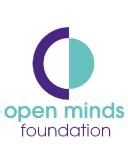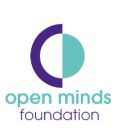Cognition
What Riots and Transphobia Teach Us About Critical Thinking
A reflective summary of global issues in the headlines and the need for critical thinking.
Posted August 29, 2024 Reviewed by Michelle Quirk
Key points
- Misinformation is fueling societal issues including civil unrest and riots.
- Expecting governments and social media platforms to contain it is unrealistic.
- Critical thinking can be the solution.
At the beginning of August, the United Kingdom was swept up by news of the fatal stabbing of three young girls at a dance class, ultimately culminating in race riots. Meanwhile, globally, Olympics mania was overshadowed by a wave of transphobia. Both were triggered by targeted disinformation campaigns, leading to widespread civil unrest and waves of hate. If nothing else, they highlight the urgent need to bring critical thinking education to the forefront of curricula, with a tangible focus on media literacy skills to dampen the wildfire spread of fake news sweeping social media platforms.
So, what happened?
Olympic boxer: Imane Khelif
A single punch that saw her opponent surrender after just 42 seconds, catapulted Algerian female boxer, Imane Khelif, into the second round of the preliminary welterweight. Commenting that she had “never been hit so hard in my life,” competitor Carini attracted the global spotlight onto the women’s boxing event, sparking a wave of transphobic attention to sweep social media, fuelled in large part by misinformation and targeted disinformation.
At the World Championships in March 2023, Khelif was disqualified from participating due to “medical reasons,” which were later published as a failed drug test for high levels of testosterone. The problem was, the test was conducted by the now-defunct IBA, and what’s more, the IBA drew the conclusion that elevated testosterone was a symptom of male chromosomes, despite no other evidence to support this conclusion. In short, the IBA declared Khelif a man, despite plenty of evidence to the contrary. Interestingly, the IBA, which had strong Russian links and some strange timings for several of their decisions, has since been stripped of its governing body status, in light of a lack of transparency and suspicion of corruption around several of its major dealings.
What followed was a flurry of misinformation and disinformation posts taking the IBA’s decision at face value, despite Khelif passing subsequent testing. The posts claimed Khelif was a man, transgender, with no right to compete. Calls to boycott the Olympics only fuelled the fire, and celebrities and influencers weighed in to offer "fair fights," condemn the Olympics, and ignite transphobic hatred, too. All against a woman, who has trained as a woman, fought (and lost) as a woman, and has a birth certificate registering her as a woman. It highlights the emotive danger of fake news.

Southport stabbings to race riots
Meanwhile, in the United Kingdom, the fatal stabbing of three young girls and the injuries of numerous adults hit the headlines, as a ferocious knife attack took place at a Taylor Swift–themed dance class. Initial motives for the attack were unclear, but the perpetrator—who we now know to be British-born 17-year-old Axel Rudakubana—has been charged with three counts of murder and 10 counts of attempted murder, in addition to possession of a bladed article.
A tragic event, and one that should have simply seen a community mourn, became even more heartrending, when far-right protestors clashed with police in Southport, after attacking a mosque. Perpetrator Rudakubana was not Muslim or a foreign national, nor did he have any connections to the mosque. Yet, a misinformation thread, originating in Pakistan and quickly spreading across far-right accounts and Channel3Now, misclaimed that the attacker was Muslim, an asylum seeker, a foreign national, and/or a refugee. It triggered far-right and national race riots, a tidal wave of racism, and an epidemic of civil unrest that was quickly condemned, but hard to contain. This, despite media coverage and the naming of Rudakubana as the attacker.
More than 1,000 arrests have now been made, including children as young as 11, and 100 people have been imprisoned. A journalist in Pakistan has also been charged with misinformation under misinformation laws in Pakistan, as a direct contributor to the unrest. While many argue that the attack merely created an excuse for far-right rioting, it nonetheless highlights the terrifying reality of misinformation spreading unchecked.

What can be done about it? The need for critical thinking
The fastest and most effective method of inoculating the population against misinformation and disinformation in all its forms is to teach and then practise critical thinking.
Critical thinking is a deliberate thought process used to evaluate information. It means specifically and intentionally examining information to determine its validity and relevance. It is an essential skill in improving your cognitive processes but, importantly, is your first line of defence for preventing coercion and coercive control, including identifying misinformation and fake news, as well as gang membership, religious extremism, and cults.
Our brains encounter thousands of pieces of information a day, requiring quick indexing of information to support decision-making. If we didn’t aggressively filter information and take it at face value, we would quickly become paralysed by the size, scale, and scope of our day, and find ourselves paralysed by indecision. While these processes deliver significant benefit in helping us function, it makes us susceptible to accepting information at face value, regardless of its origin. This makes us extremely vulnerable to misinformation and disinformation campaigns, many of which seek to destabilise social function.
Critical thinking is the antithesis, offering tangible, effective strategies to combat our natural shortcomings. It is a learned skill that teaches us to think better, as well as teaching us when we need to think more slowly, allowing time for fact-checking, reflection, and a rational, rather than emotional reaction. At its core, critical thinking is a commitment to remaining open-minded and accepting of other viewpoints; being curious and actively seeking out information; testing your own assumptions by looking for contrary opinions; and pausing to allow emotional reactions to pass and logical reasoning to reassert. The key stages are these:
- Pause and observe: Take time to notice the critically important details and the context of the information.
- Ask questions: Seek to clarify the information and, if necessary, seek alternative sources.
- Determine bias: Every source has a bias—some innocuous, some malicious. Consider the context of the information and the angle they may want to take.
- Infer the implications: What are the implications of the information in that context? What purpose are they hoping to achieve?
- Remain open-minded: Accept that there are other viewpoints; try to understand these respectfully and see how they overlay your own.
- Reason and logic: Apply reason and logic to the information to determine what it tells you. Check facts again at this stage if you need to.
- Re-evaluate and conclude: Sticking doggedly to your beliefs, even in light of new evidence, is a common but difficult trait, and critical thinkers will actively challenge their own ideas.
Critical thinkers are typically not afraid to admit they were wrong or to change their stance in light of new information. In addition, applied critical thinking skills, such as improving your media literacy, can help reduce your susceptibility to misinformation.
Critical thinking in education
At the Open Minds Foundation, we have been tenaciously working to get critical thinking embedded in Western education frameworks, as a method for improving societal thinking and combatting common issues. While misinformation and disinformation are obvious examples, manipulation and coercive control are rife in everything from gang behaviours and cults to religious and political extremism. We have a partnership with teaching resource provider Jigsaw to bring our primary-school resources into schools and are delighted to see the recent statements from Education Secretary Bridget Phillipson vowing an end to “putrid conspiracy theories” with changes to the National Curriculum to help pupils spot fake news.
Traditionally, Western education systems are geared toward knowledge acquisition and spend the majority of time conveying what we know rather than how we know it. Importantly, introducing critical thinking skills to children as young as 5 years helps form the basis of intelligent enquiry and helps determine future capability in critical thinking. When we shift away from pure knowledge acquisition and into a process of learning to learn, we sow the seed for the future skills that young people need to protect their own autonomy.




